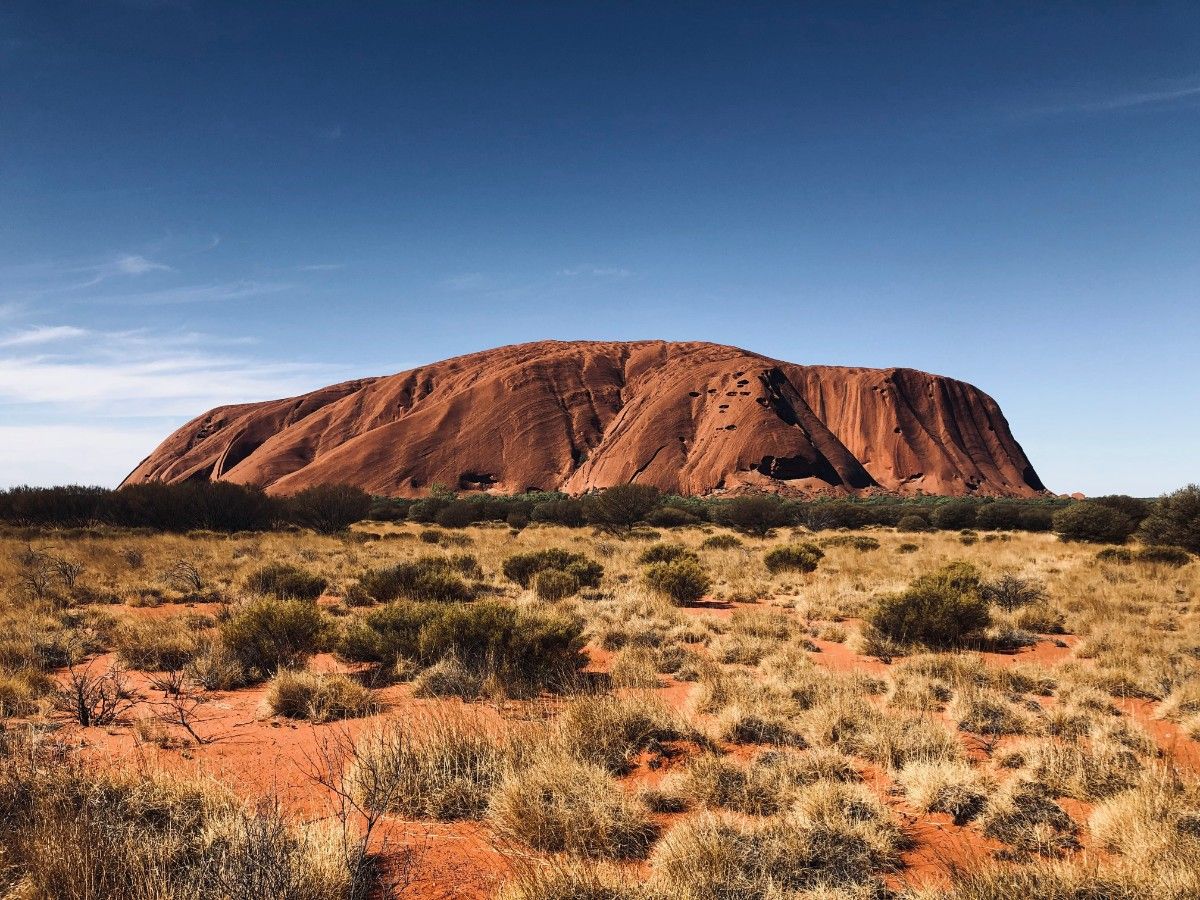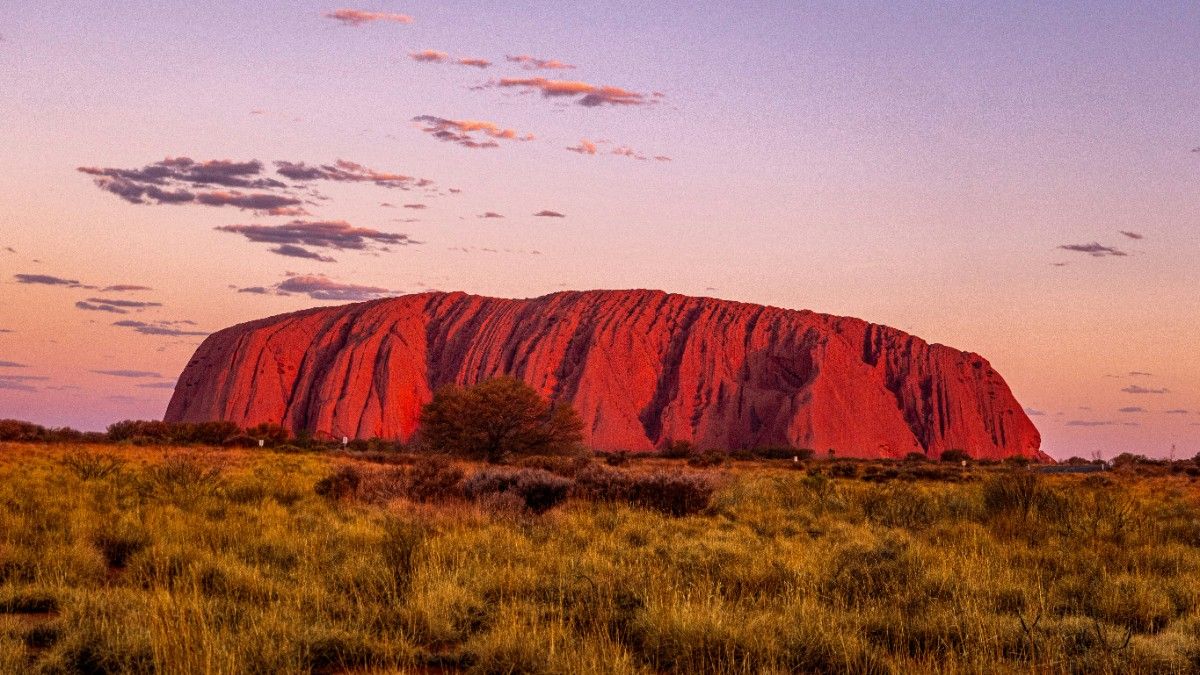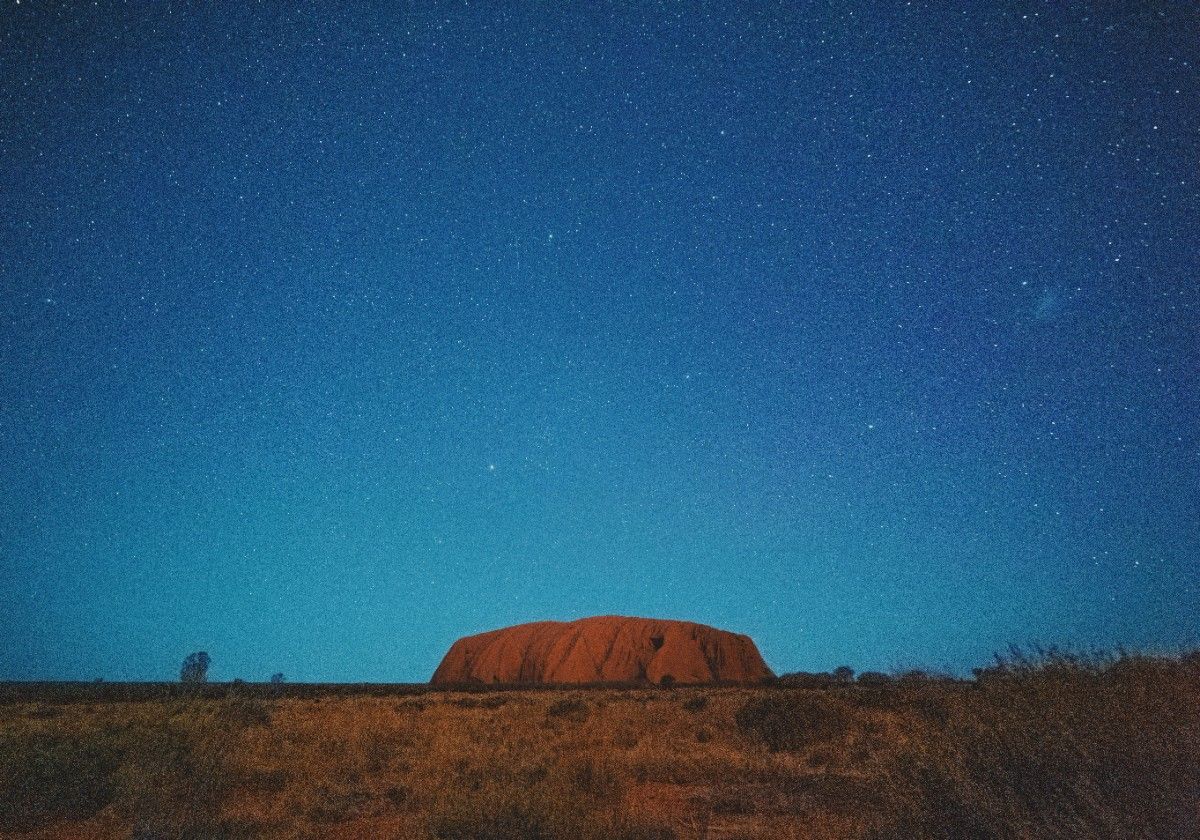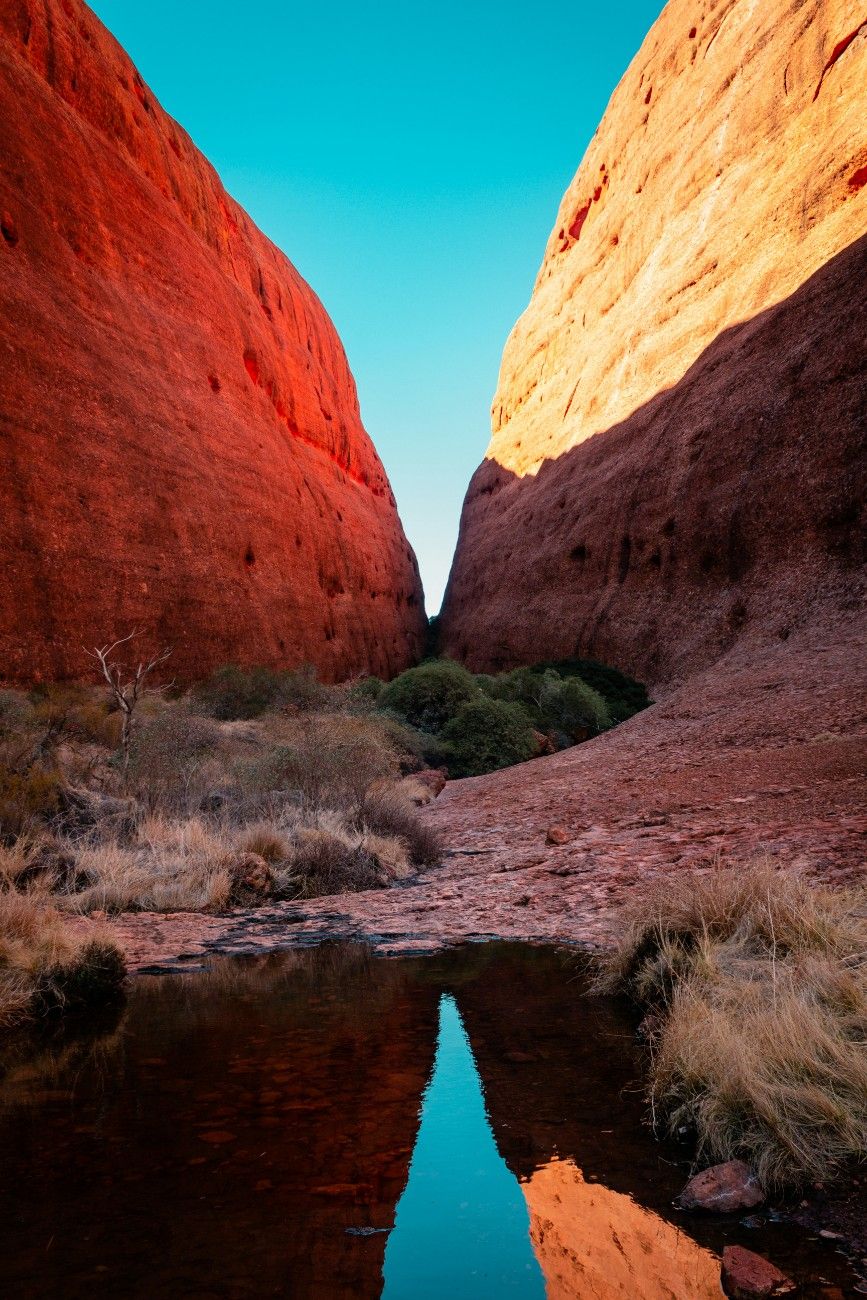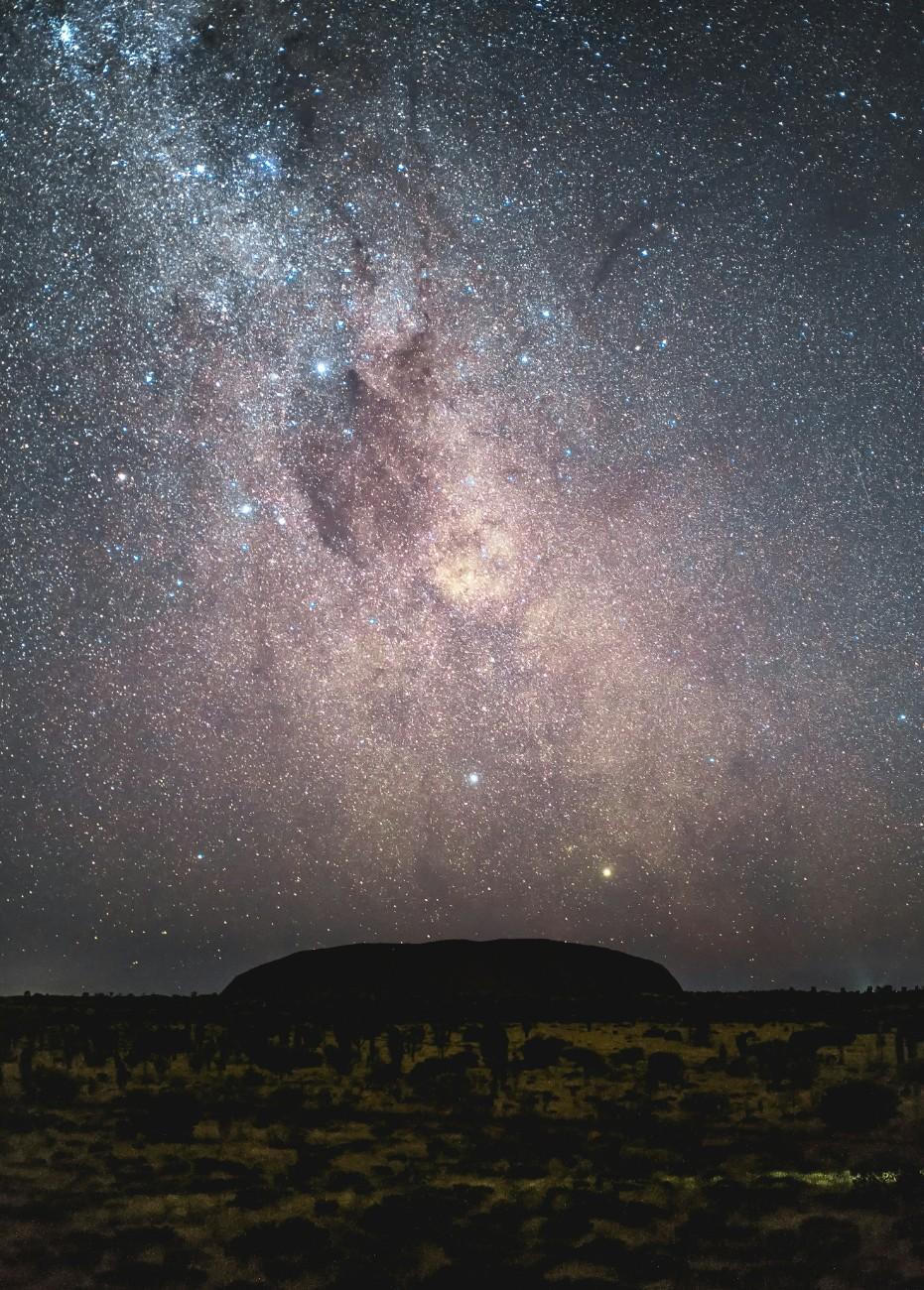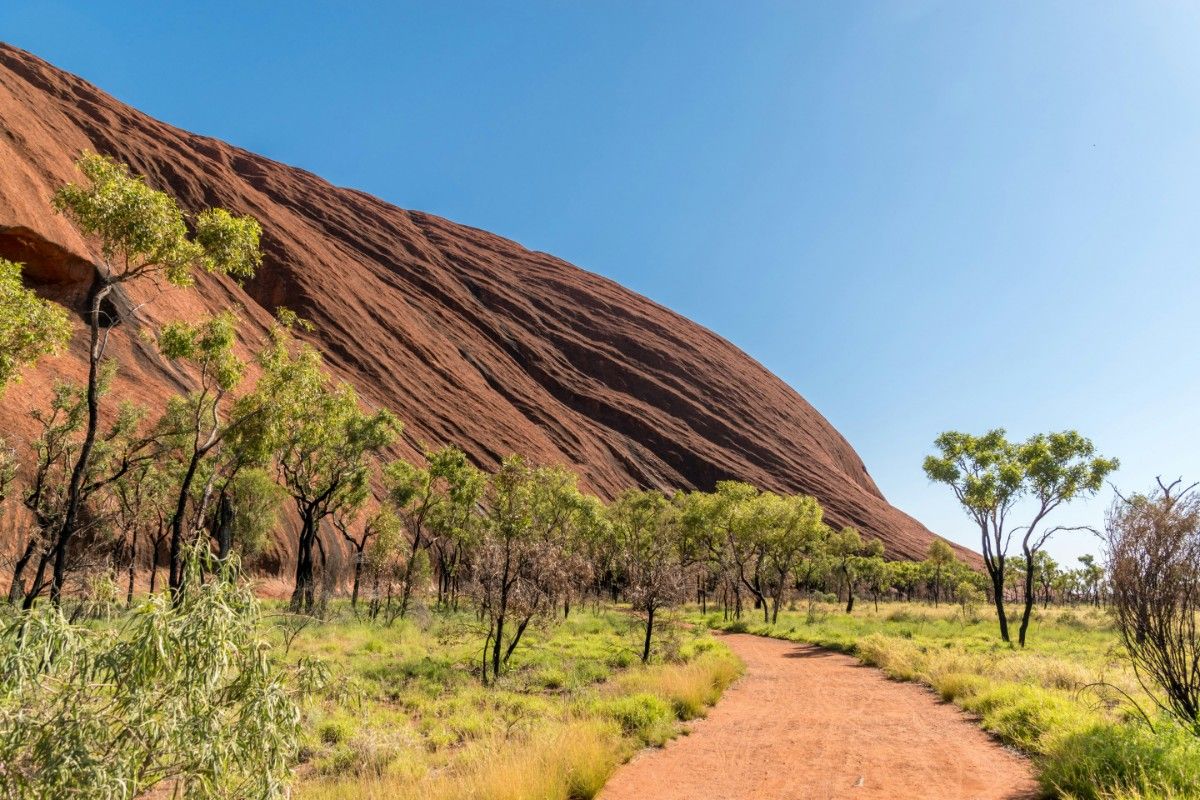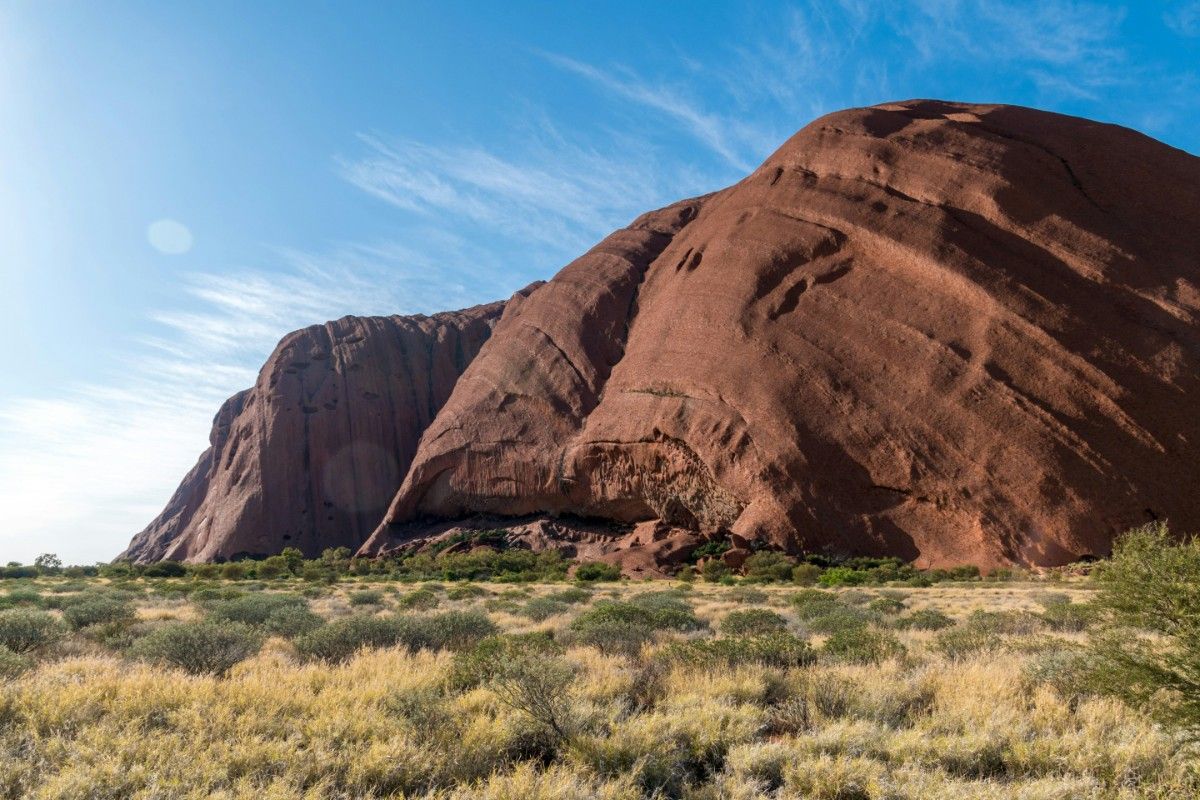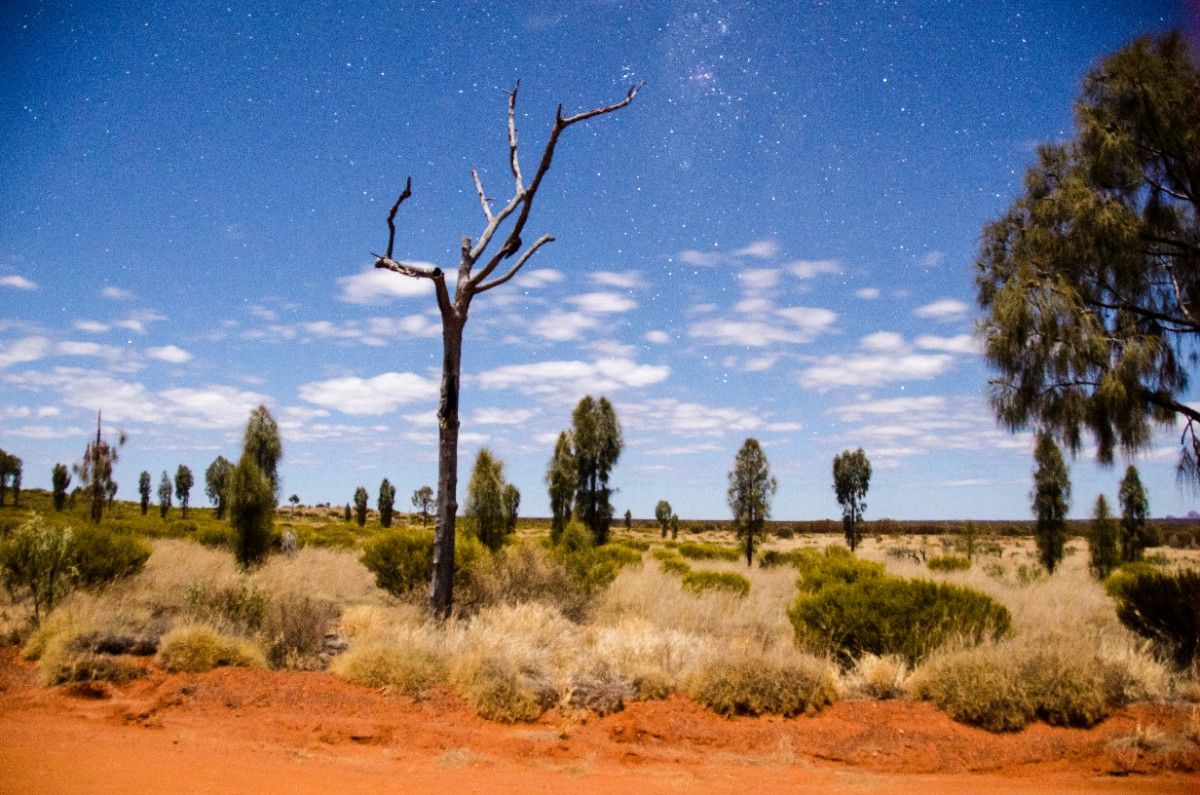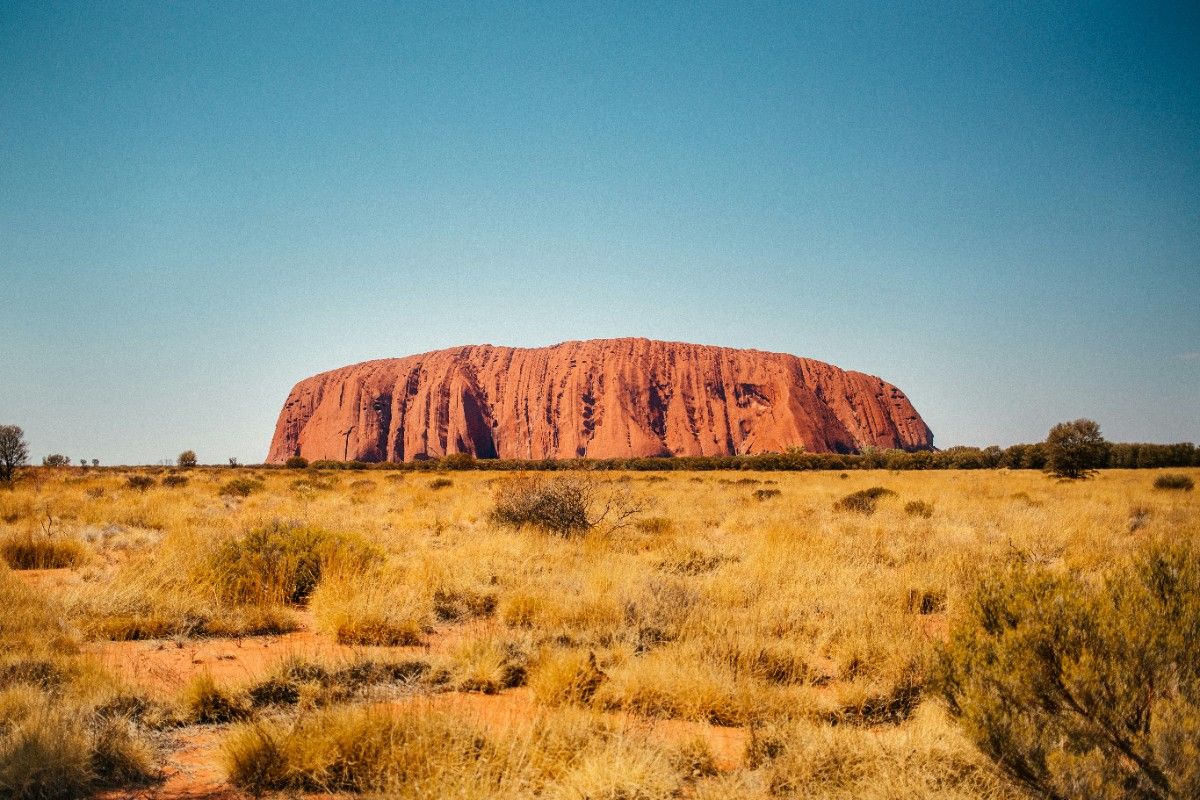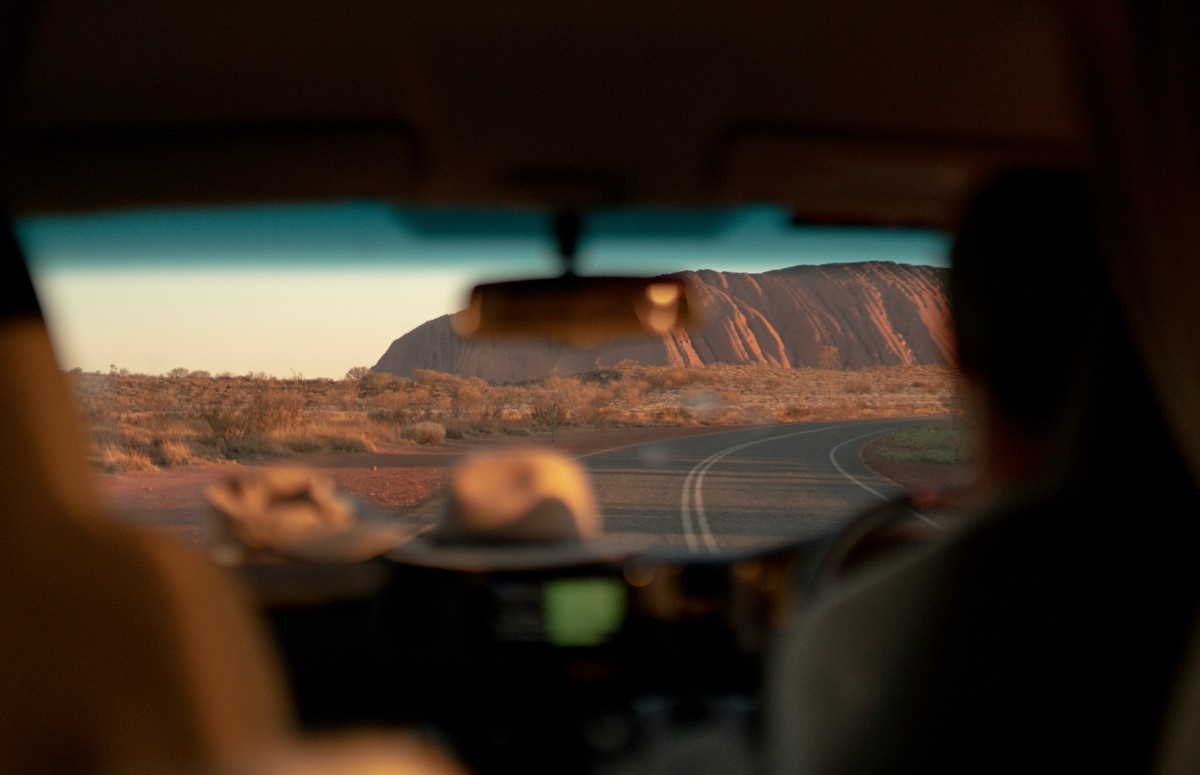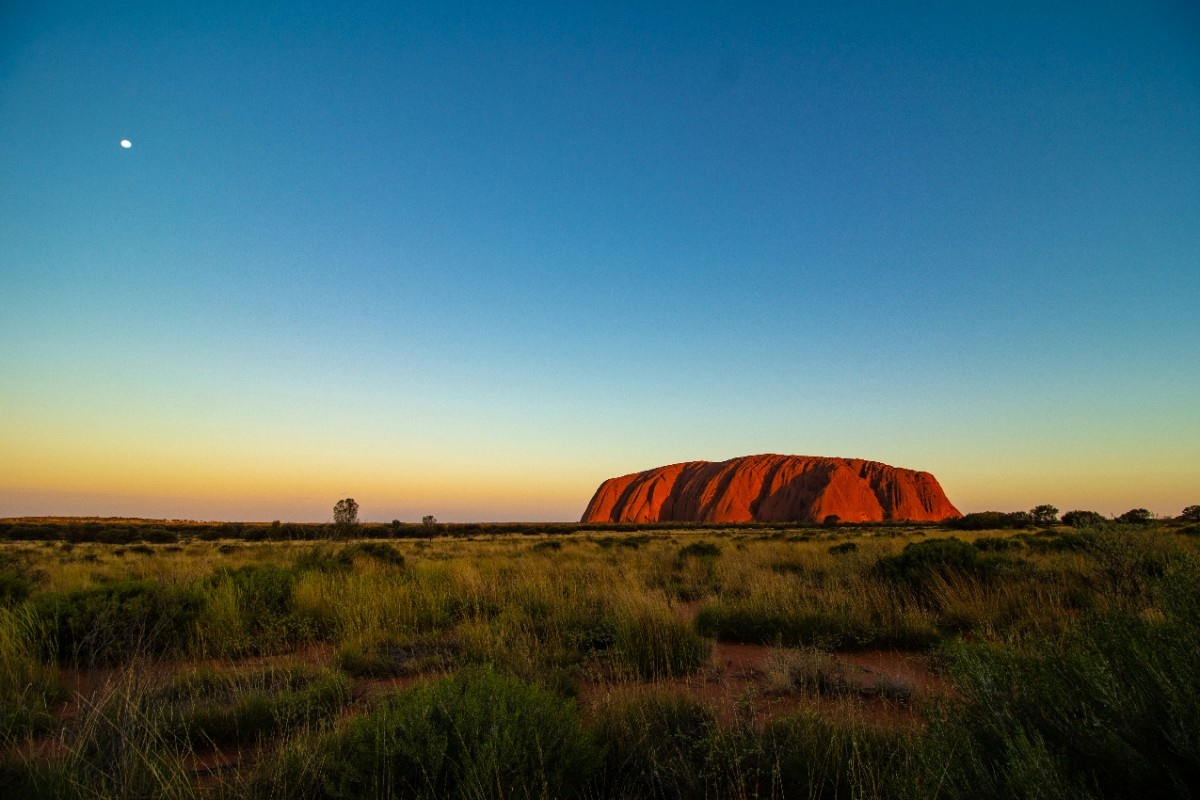Introduction to Uluru
Overview of Uluru
Uluru, also known as Ayers Rock, is an iconic sandstone monolith situated in the heart of Australia's Northern Territory. This awe-inspiring landmark stands 348 metres above the surrounding plain and has a circumference of 9.4 kilometres. Uluru is not only a natural wonder but also a place of immense spiritual and cultural significance for the Anangu, the traditional owners of the land. The rock's formation dates back over 500 million years, and its presence has captivated visitors from all corners of the globe. The striking red hue of Uluru is a result of the oxidation of iron-bearing minerals within the rock, creating a breathtaking contrast against the vast expanse of the Australian outback. Uluru's significance extends beyond its geological features, as it holds a sacred place in the ancient stories and traditions of the Anangu people. For generations, they have been the custodians of this land, passing down their knowledge and cultural practices from one generation to the next. Visiting Uluru provides an opportunity to immerse oneself in the rich history and spirituality of the Australian landscape while marvelling at the sheer magnificence of this natural masterpiece.
Location and Accessibility
Uluru is located within the Uluru-Kata Tjuta National Park in the southern part of the Northern Territory, approximately 450 kilometres southwest of Alice Springs. The nearest town to Uluru is Yulara, which is about 20 kilometres away and serves as the main hub for accommodations and tourism services. Despite its remote location, Uluru is easily accessible by both air and road. The Ayers Rock Airport (AYQ), situated just 6 kilometres from Yulara, receives regular flights from major Australian cities such as Sydney, Melbourne, Brisbane, and Alice Springs. Alternatively, visitors can reach Uluru by driving from Alice Springs along the sealed Stuart and Lasseter Highways, a journey that takes approximately 4.5 hours. Once in the Uluru-Kata Tjuta National Park, visitors can explore the base of Uluru through a network of walking trails and guided tours. The park also offers a range of facilities and amenities, including a cultural centre, picnic areas, and viewing platforms, to enhance the visitor experience.
Geological Formation and Characteristics
Geological History
The formation of Uluru is a testament to the ancient geological processes that have shaped the Australian continent over millions of years. The story of Uluru begins over 500 million years ago during the Cambrian Period when sand, eroded from the nearby Petermann Ranges, was deposited in the area. Over time, these layers of sand were compressed and cemented together by the pressure of groundwater, creating a solid arkose sandstone. Around 400 million years ago, tectonic forces began to uplift and tilt the arkose sandstone, resulting in the nearly vertical strata visible on Uluru's surface today. As the surrounding softer rocks eroded away, the more resistant arkose sandstone remained, giving rise to the monolith we now know as Uluru. The rock's distinctive red colour is a result of the oxidation of iron-bearing minerals within the sandstone, a process that occurs when the iron content reacts with oxygen and water to produce a thin layer of iron oxide or rust.
Physical Features and Dimensions
Uluru is a massive sandstone monolith that stands 348 metres (1,142 feet) above the surrounding plain and has a circumference of 9.4 kilometres (5.8 miles). The rock's surface is marked by distinctive parallel lines, which are a result of the tilting and folding of the original sedimentary layers. These lines, along with the numerous caves, crevices, and overhangs, contribute to the unique appearance of Uluru. The monolith is also notable for its asymmetrical shape, with a long, sloping western side and a steeper, shorter eastern face. This asymmetry is a result of the differential weathering and erosion of the rock over millions of years. Despite its imposing size, it is estimated that only about one-third of Uluru's total mass is visible above ground, with the remaining two-thirds hidden beneath the surface. The rock's dimensions and orientation also play a role in the stunning visual effects that occur during sunrise and sunset. As the sun's rays strike the surface of Uluru at different angles throughout the day, the rock appears to change colour, ranging from deep reds and oranges to shades of purple and blue.
Weathering and Erosion
The current shape and features of Uluru have been shaped by the ongoing processes of weathering and erosion over millions of years. The most significant weathering process affecting Uluru is chemical weathering, which involves the breakdown of rock minerals through reactions with water, oxygen, and other substances. In the case of Uluru, the iron-rich minerals within the arkose sandstone react with oxygen and water to form iron oxides, giving the rock its characteristic red colour. This process also weakens the rock surface, making it more susceptible to physical weathering and erosion. Physical weathering occurs when the rock is subjected to mechanical forces, such as temperature changes, wind, and water. The extreme temperature fluctuations in the Australian outback, where temperatures can range from below freezing at night to over 40°C (104°F) during the day, cause the rock to expand and contract, leading to cracking and flaking of the surface. Wind and water also play a role in shaping Uluru, with wind-blown sand abrading the rock surface and rare rainfall events contributing to the formation of waterfalls, pools, and erosional features such as gullies and channels. These weathering and erosion processes continue to shape Uluru today, albeit at a very slow rate. It is estimated that the rock's surface is lowering by approximately 0.14 millimetres per year, which means that the monolith will continue to evolve and change over geological timescales.
Cultural Significance and Anangu People
Anangu Culture and Spirituality
Uluru holds immense cultural significance for the Anangu people, the traditional owners of the land. For the Anangu, Uluru is not merely a geological wonder but a sacred site deeply ingrained in their spiritual beliefs and cultural practices. According to Anangu traditions, the landscape around Uluru was created by ancestral beings during the Dreamtime, a period in which the world was shaped and the rules for living were established. These ancestral spirits, known as Tjukuritja, are believed to have travelled across the land, creating and shaping the features of the landscape, including Uluru and the nearby Kata Tjuta. The Anangu believe that these spirits continue to reside within the rock and the surrounding areas, imbuing Uluru with a living, breathing presence that demands the utmost respect and reverence. The stories and songs associated with these ancestral beings are passed down through generations, forming the basis of Anangu culture and spirituality. The Anangu's connection to the land is not just spiritual but also practical, as they have developed a deep understanding of the environment and its resources over thousands of years. This knowledge has allowed them to thrive in the harsh conditions of the Australian outback, utilising the plants and animals of the region for food, medicine, and other essential purposes.
Rock Art and Sacred Sites
The caves, crevices, and overhangs of Uluru are home to numerous rock art sites and sacred places that hold great significance for the Anangu people. These sites serve as visual representations of the Dreamtime stories and the journeys of the ancestral beings. The rock art found at Uluru includes a variety of styles and techniques, such as petroglyphs (engravings), pictographs (paintings), and stencils. Some of the most common motifs depicted in the rock art include concentric circles, animal tracks, and human figures. These designs are not merely decorative but are imbued with deep symbolic meaning, often representing important cultural and spiritual concepts. In addition to the rock art, there are many sacred sites around Uluru that are associated with specific Dreamtime stories and ancestral beings. These sites may be connected to important events in the lives of the Tjukuritja, such as births, deaths, or battles. Some sacred sites are also linked to ceremonial activities and initiation rites, which are essential for the transmission of cultural knowledge and the maintenance of social cohesion within Anangu society. Access to these sacred sites is often restricted, with certain areas being off-limits to visitors or accessible only to specific members of the Anangu community based on factors such as age, gender, and initiation status.
Joint Management and Tourism
In recognition of the Anangu's deep cultural connection to Uluru and the surrounding landscape, the Australian government has implemented a joint management arrangement for the Uluru-Kata Tjuta National Park. This arrangement, which has been in place since 1985, ensures that the Anangu have a strong voice in the decision-making processes related to the park's management and that their cultural values and practices are respected and protected. Under the joint management system, the Anangu work closely with Parks Australia to develop and implement management plans, monitor the health of the environment, and educate visitors about the cultural significance of Uluru. This collaborative approach has been widely praised as a model for Indigenous involvement in protected area management and has helped to foster a greater understanding and appreciation of Anangu culture among visitors to the park. The Anangu's involvement in tourism at Uluru has also grown significantly in recent years. Many Anangu work as rangers, guides, and cultural interpreters, sharing their knowledge and stories with visitors and providing unique insights into the spiritual and cultural significance of the landscape. This not only helps to create a more authentic and meaningful visitor experience but also provides important employment and economic opportunities for the Anangu community.
Flora and Fauna of the Region
Desert Plants and Adaptations
The area surrounding Uluru is characterised by a harsh, arid environment, with high temperatures, low rainfall, and poor soil quality. Despite these challenging conditions, the region supports a surprising diversity of plant life, with many species exhibiting unique adaptations that allow them to thrive in the desert. One of the most iconic plants found in the Uluru region is spinifex grass (Triodia species). This spiky, tussock-forming grass is well-adapted to the dry conditions, with deep root systems that allow it to access moisture from the soil and waxy leaves that help to reduce water loss. Spinifex grass is not only an important food source for many desert animals but also plays a crucial role in stabilising the sandy soils and preventing erosion.
Other notable plant species found around Uluru include the desert oak (Allocasuarina decaisneana), a tree that can grow up to 20 meters tall and is known for its thick, corky bark that helps to insulate the trunk from the extreme heat. The desert oak's needle-like leaves are also an important food source for many desert animals, including the red kangaroo and the common wallaroo. The Uluru region is also home to a variety of shrubs and wildflowers that have adapted to the arid conditions. Many of these plants have deep root systems, small or reduced leaves, and the ability to quickly respond to rainfall events by germinating and flowering in a short period. Some examples include the honey grevillea (Grevillea eriostachya), with its distinctive yellow and red flowers, and the desert fringe-myrtle (Calytrix carinata), which produces masses of small, star-shaped flowers after rain.
Iconic Desert Animals
The harsh desert environment around Uluru supports a diverse array of animal life, with many species exhibiting unique adaptations that allow them to survive in the extreme conditions. One of the most iconic animals found in the region is the red kangaroo (Macropus rufus), the largest marsupial in Australia. These majestic creatures are well-adapted to the arid environment, with the ability to regulate their body temperature and conserve water by licking their forearms and allowing the moisture to evaporate and cool the blood vessels close to the skin. Red kangaroos are also able to survive for long periods without drinking water, obtaining moisture from the plants they eat.
Another notable mammal found in the Uluru region is the dingo (Canis lupus dingo), Australia's largest land predator. Dingoes play an important role in the desert ecosystem, helping to control populations of smaller mammals and maintain the balance between predators and prey. The Uluru region is also home to a variety of reptiles, including the thorny devil (Moloch horridus), a small, spiky lizard that is adapted to the desert environment in several ways. The thorny devil's skin is covered in a network of microscopic channels that allow it to collect and transport dew and moisture from any part of its body to its mouth, enabling it to drink without the need for standing water. The lizard's spiky armour also helps to protect it from predators and regulate its body temperature.
Birdlife and Desert Adaptations
The skies above Uluru are home to a diverse array of birdlife, with many species exhibiting unique adaptations that allow them to thrive in the harsh desert environment. One of the most iconic birds found in the region is the wedge-tailed eagle (Aquila audax), Australia's largest bird of prey. These majestic raptors can often be seen soaring above Uluru, using their keen eyesight to spot potential prey, such as rabbits, small kangaroos, and lizards. The wedge-tailed eagle's impressive size and hunting abilities make it a top predator in the desert ecosystem.
Another notable bird species found in the Uluru region is the budgerigar (Melopsittacus undulatus), a small, colourful parrot that is well-adapted to the arid environment. Budgerigars are highly nomadic, able to travel long distances in search of food and water. During times of plenty, these birds form large flocks that can number in the thousands, creating a spectacular sight as they wheel and turn in unison across the desert sky. The Uluru region is also home to a variety of other bird species that have adapted to the desert environment in various ways. For example, the Australian pratincole (Stiltia isabella) is a ground-dwelling bird that has long legs and a short bill, allowing it to run quickly across the hot sand in pursuit of insects. The white-winged fairy-wren (Malurus leucopterus), on the other hand, is a small, active bird that has adapted to the arid conditions by foraging in the early morning and late afternoon when temperatures are cooler.
Tourism and Visitor Experience
Exploring the Base of Uluru
One of the most popular ways to experience Uluru is by exploring its base, which offers visitors a chance to appreciate the rock's sheer size and beauty up close. The Uluru Base Walk is a 10.6-kilometer trail that circumnavigates the entire rock, allowing visitors to see the monolith from every angle and discover its many caves, crevices, and sacred sites. Along the way, visitors can learn about the geological features of Uluru, the flora and fauna of the region, and the deep cultural significance of the site to the Anangu people. Interpretive signs and guided tours, led by Anangu rangers or park guides, provide valuable insights into the stories, traditions, and cultural practices associated with Uluru. For those who prefer a shorter walk, the Mala Walk is a 2-kilometer return trail that leads to the Kantju Gorge, a sacred site where the Mala ancestral beings are believed to have gathered. This walk offers breathtaking views of Uluru's north-west face and includes a visit to the Mutitjulu Waterhole, a semi-permanent water source that is home to many plants and animals. Visitors are asked to respect the sacredness of Uluru and to stay on designated paths to minimise their impact on the delicate desert environment.
Sunrise and Sunset Experiences
Watching the sunrise or sunset over Uluru is an unforgettable experience that draws visitors from around the world. As the sun rises or sets, the rock undergoes a mesmerising transformation, its colours shifting from deep red to orange, purple, and blue, depending on the time of day and weather conditions. There are several designated viewing areas around Uluru that offer stunning vistas of the rock and the surrounding landscape. The Talinguru Nyakunytjaku viewing platform, located on the eastern side of Uluru, is a popular spot for watching the sunrise, as it offers uninterrupted views of the rock and the vast expanse of the Australian outback.
For sunset, the Car Sunset Viewing Area, on the western side of Uluru, provides a spectacular vantage point as the sun dips below the horizon, casting a warm glow across the desert landscape. Many visitors choose to enhance their sunrise or sunset experience by joining a guided tour or enjoying a gourmet picnic breakfast or dinner at the viewing areas. These tours often include commentary on the cultural and spiritual significance of Uluru, as well as the opportunity to sample traditional Anangu bush foods and listen to stories about the Dreamtime.
Cultural Experiences and Activities
Engaging with Anangu culture is an essential part of any visit to Uluru. The Anangu people have a deep spiritual connection to the land and a rich cultural heritage that they generously share with visitors through a range of experiences and activities. The Uluru-Kata Tjuta Cultural Centre, located near the park entrance, is a great starting point for learning about Anangu culture and the significance of Uluru. The centre features interactive exhibits, artworks, and multimedia displays that provide insight into Anangu history, traditions, and contemporary life. Visitors can also attend free daily activities, such as bush food demonstrations, guided garden walks, and traditional wood carving workshops.
Another popular cultural experience is the Maruku Arts Dot Painting Workshop, where visitors can learn about the symbolism and techniques of traditional Anangu art and create their own dot painting under the guidance of an Anangu artist. For a more immersive experience, visitors can join an Anangu-led tour, such as the Kuniya Walk or Mutitjulu Waterhole Walk, which provide a deeper understanding of the spiritual and cultural significance of Uluru and its surroundings. These tours often include traditional stories, bush food tastings, and demonstrations of skills such as spear throwing and fire making.
Accommodation and Facilities
Ayers Rock Resort
The Ayers Rock Resort is the primary accommodation hub for visitors to Uluru, offering a wide range of options to suit different budgets and preferences. Located just outside the Uluru-Kata Tjuta National Park, the resort complex is a 20-minute drive from Uluru and provides easy access to all the park's main attractions and activities. The resort's flagship accommodation is the 5-star Sails in the Desert Hotel, which features luxurious rooms and suites, a gourmet restaurant, a spa, and a swimming pool with views of Uluru.
For a unique experience, guests can stay in one of the hotel's Deluxe Rock View Rooms, which offer stunning vistas of Uluru from the comfort of their private balcony. Other accommodation options at the resort include the 4-star Desert Gardens Hotel, with its central garden courtyard and native landscaping, and the more affordable Outback Pioneer Hotel and Lodge, which offers a range of comfortable rooms and dormitory-style accommodation. For those seeking a closer connection to nature, the Ayers Rock Campground provides powered and unpowered sites for caravans, campervans, and tents, as well as modern amenities like showers, toilets, and a swimming pool.
Dining and Shopping Facilities
The Ayers Rock Resort offers a diverse range of dining options to cater to all tastes and budgets. From casual cafes and bistros to fine dining restaurants, visitors can sample a variety of cuisines showcasing local ingredients and Australian flavours. The resort's signature dining experience is the Sounds of Silence, an outdoor dinner event that takes place on a viewing platform overlooking Uluru. Guests can enjoy a gourmet buffet featuring Australian delicacies such as kangaroo, crocodile, and barramundi while watching the sun set over the desert landscape and listening to a didgeridoo performance.
Other notable dining options include the Ilkari Restaurant at Sails in the Desert, which offers a menu inspired by native Australian ingredients, and the Pioneer Kitchen at the Outback Pioneer Hotel, which serves hearty pub-style meals in a relaxed atmosphere. For those who prefer to self-cater, the resort also has a small supermarket and several shops selling food and drinks. In addition to dining, the Ayers Rock Resort has a range of shopping facilities where visitors can purchase souvenirs, gifts, and essential items. The Resort Town Square is the main shopping hub, with stores selling everything from aboriginal art and crafts to outdoor gear and camping supplies. The Mingkiri Arts Gallery showcases a wide selection of authentic Aboriginal artworks from the region, while the Wintjiri Arts and Museum features exhibitions on local history and culture.
Other Facilities and Services
The Ayers Rock Resort offers a range of facilities and services to enhance the visitor experience and cater to different needs and interests. For those looking to relax and unwind, the resort has two swimming pools (one at Sails in the Desert and one at the campground), as well as the Sails in the Desert Spa, which offers a menu of treatments inspired by native Australian ingredients and traditional healing practices. Visitors can also stay active with the resort's tennis courts, a fitness centre, and a range of free activities like guided walks and yoga classes.
For families travelling with children, the resort has a kids' club and playground, as well as a range of activities designed to educate and entertain young visitors, such as indigenous art workshops and bush tucker tastings. The resort also has several conference and event facilities, including the Uluru Meeting Place, which can accommodate up to 420 people and is equipped with state-of-the-art audiovisual technology. For visitors who need to stay connected, the resort offers complimentary Wi-Fi in all hotels and public areas, as well as a business centre with computers and printing facilities. Other services include a fuel station, a car rental desk, and a medical clinic staffed by qualified nurses and doctors.
Excursions and Activities
Guided Walks and Tours
One of the best ways to explore Uluru and learn about its natural and cultural significance is through guided walks and tours. The Uluru-Kata Tjuta National Park offers a range of guided experiences led by Anangu rangers and park guides who share their knowledge and stories with visitors. The Mala Walk, a 2-kilometre return trail, is a popular guided walk that takes visitors to the Kantju Gorge, a sacred site associated with the Mala ancestral beings. Along the way, guides explain the Dreamtime stories and point out important features of the landscape, such as rock art and waterholes.
Another guided experience is the Kuniya Walk, which leads to the Mutitjulu Waterhole at the base of Uluru. This walk is rich in Anangu culture and offers insights into the spiritual significance of water in the desert environment. For a more immersive experience, visitors can join the Uluru Sunrise Guided Base Walk, a 10-kilometer circuit around the base of Uluru that takes approximately 3.5 hours. This walk provides a comprehensive overview of Uluru's geology, ecology, and Anangu culture, with regular stops at key sites and plenty of opportunities to ask questions and learn from knowledgeable guides.
Scenic Flights and Helicopter Tours
For a truly unforgettable experience, visitors can take to the skies and marvel at the breathtaking beauty of Uluru and the surrounding landscape from above. Scenic flights and helicopter tours offer a unique perspective on the scale and grandeur of Uluru and nearby Kata Tjuta, with stunning aerial views that showcase the changing colours and textures of the desert throughout the day.
One of the most popular scenic flight options is the Uluru and Kata Tjuta Tour, a 60-minute flight that departs from Ayers Rock Airport and takes passengers on a breathtaking journey over the two iconic landmarks. The flight includes informative commentary from the pilot, who points out key features of the landscape and shares stories about the region's geology, ecology, and Anangu culture.
For a more exclusive experience, visitors can opt for a private helicopter tour, which can be customised to suit individual interests and preferences. These tours typically include a landing at a remote location within the Uluru-Kata Tjuta National Park, where passengers can enjoy a gourmet picnic breakfast or dinner while taking in the stunning views of Uluru and the surrounding desert.
Camel Tours and Segway Rides
For a unique and memorable way to explore the desert landscape around Uluru, visitors can join a camel tour or Segway ride. Camel tours offer a leisurely and eco-friendly way to discover the beauty and tranquillity of the Australian outback, with knowledgeable guides who share stories about the history and ecology of the region. Tours typically depart in the early morning or late afternoon, when the light is soft and the temperatures are cooler, and can last from 30 minutes to several hours depending on the itinerary. Visitors can choose from a range of options, including short rides around the camel farm, longer treks through the sand dunes, and even overnight safaris with camping under the stars.
For a more high-tech adventure, visitors can join a Segway tour of the desert landscape near the Ayers Rock Resort. Segways are self-balancing electric vehicles that are easy and fun to ride, and offer a unique way to explore the stunning scenery and learn about the flora and fauna of the region. Tours typically last 2-3 hours and include a training session to ensure riders are comfortable and confident on the Segways. Highlights of the tour include gliding through towering sand dunes, spotting native wildlife like kangaroos and emus, and learning about the traditional uses of desert plants from the knowledgeable guides.
Preservation and Conservation Efforts
Cultural Heritage Protection
Preserving the cultural heritage of Uluru and the surrounding landscape is a key priority for the Anangu people and the Uluru-Kata Tjuta National Park. The park is jointly managed by the Anangu and the Australian National Parks and Wildlife Service, with a strong focus on protecting sacred sites, rock art, and other culturally significant areas. One of the most important steps in preserving Uluru's cultural heritage was the decision to close the climb on the rock in October 2019.
For many years, the Anangu had requested that visitors respect their wishes and refrain from climbing Uluru, as it is a sacred site and the act of climbing can cause damage to the fragile surface of the rock. The closure of the climb was a significant moment in the history of Uluru and a powerful symbol of respect for Anangu culture and traditions. Other cultural heritage protection measures include the development of the Uluru-Kata Tjuta Cultural Centre, which provides visitors with a deeper understanding of Anangu culture and the significance of Uluru through interactive exhibits, artworks, and multimedia displays. The park also employs Anangu rangers and guides who share their knowledge and stories with visitors, helping to promote cross-cultural understanding and respect.
Environmental Conservation and Research
Protecting the delicate desert ecosystem of the Uluru-Kata Tjuta National Park is another key focus of conservation efforts in the region. The park is home to a diverse array of flora and fauna, including many species that are endemic to the area and found nowhere else in the world. To help preserve this unique biodiversity, the park has implemented a range of environmental conservation measures, such as controlling invasive species, managing fire regimes, and monitoring the health of key plant and animal populations.
One of the most important tools for environmental conservation in the park is scientific research. The park has a long history of collaboration with universities, government agencies, and other research organisations to study the ecology, geology, and hydrology of the region. This research helps to inform park management decisions and guide conservation efforts, ensuring that the park's natural resources are protected for future generations. Examples of recent research projects in the park include studies of the impact of climate change on desert ecosystems, investigations into the breeding biology of rare and endangered species, and surveys of the park's groundwater resources to ensure sustainable water management.
Sustainable Tourism Practices
With hundreds of thousands of visitors coming to Uluru each year, managing the impact of tourism on the environment and local communities is a critical challenge for the Uluru-Kata Tjuta National Park. To address this challenge, the park has implemented a range of sustainable tourism practices designed to minimise the ecological footprint of visitors while still providing a high-quality experience.
One of the key strategies for sustainable tourism in the park is the development of eco-friendly accommodations and facilities. The Ayers Rock Resort, which is the main hub for visitors to Uluru, has implemented a range of sustainability measures, such as solar power generation, water recycling, and waste reduction programs. The resort also offers a range of eco-friendly activities and tours, such as guided walks and electric bike rentals, which allow visitors to explore the park without damaging the environment.
Another important aspect of sustainable tourism in the park is visitor education and engagement. The park provides a range of educational resources and programs to help visitors understand the importance of protecting the environment and respecting Anangu culture. This includes interpretive signage, guided tours, and interactive exhibits at the Cultural Centre. By promoting responsible tourism practices and encouraging visitors to tread lightly on the land, the park hopes to ensure that Uluru remains a sacred and special place for generations to come.
Related Articles

Let us know you agree to cookies
We use marketing, analytical and functional cookies as well as similar technologies to give you the best experience. Third parties, including social media platforms, often place tracking cookies on our site to show you personalised adverts outside of our website.
We store your cookie preferences for two years and you can edit your preferences via ‘manage cookies’ or through the cookie policy at the bottom of every page. For more information, please see our cookie policy.
